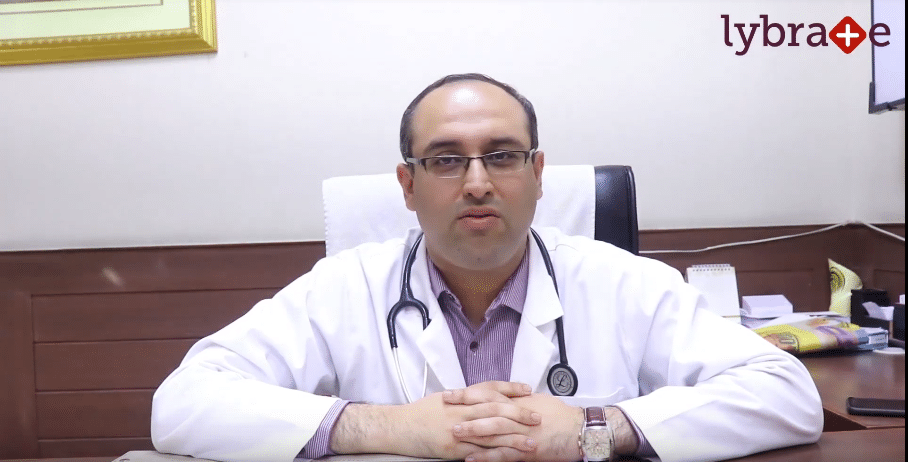
National Heart Institute
Neurologist Clinic
About Clinic
Customer service is provided by a highly trained, professional staff who look after your comfort and care and are considerate of your time. Their focus is you....read more
Clinic Timing
Clinic Location
Videos

Hello!
I am Dr. Dhruv Zutshi, I'll be talking about stroke now. Stroke is an illness jisme hum common tongue mein bolte hai paralysis or one part of the body becomes totally paralyzed and we are not able to move it. Now this is a very severe disease and a medical emergency. So, whenever you notice anybody like your relative, friend suddenly develops weakness on one part of the body, you should immediately bring the patient to the hospital. Initially, many years back it was believed that stroke cannot be treated, there is no treatment for paralysis but that is not true. Today, we have best treatments available and by giving some injections within a four and half hour period you can even reverse the symptoms of stroke completely. We can even up to 6 hours use some catheters and certain amount of interventions so as to prevent the patient from becoming paralytic for the rest of his life. So that is why stroke has to be realised immediately and patients should immediately rush to the hospital. For this these is an acronym called as FAST.
FAST means: F for any kind of deviation of the face, A for any arm weakness, S for any slurring of speech and T is for time which is up to four and a half hours. So if you ever see anybody in your family, your own relatives anybody who is suddenly developing paralysis or one side weakness you should remember these four things and immediately rush him to the closest big hospital. Now other things are this is for the management of stroke, that when a stroke happens what you can do. Now further why does it happen? Stroke is generally a condition wherein the blood vessels of the brain can become blocked due to a thrombus getting formed or a clot or there may be a rupture of the blood vessel of the brain due to raised blood pressure or any other reason. Of this the kind of stroke wherein a clot gets formed in the blood vessel or ischemic stroke it forms about 80-85% of the cases. The hemorrhagic strokes are only 15%.
So, most patients will mostly generally have ischemic strokes. For the ischemic strokes the common risk factors are diabetes, hypertension, age more than 60 years of age, smoking, then patients who are using recreational drugs, then dislipidemia and many other risk factors. With hemorrhagic strokes, the most common risk factor is hypertension following which if there is uncontrolled hypertension then the blood vessels of the brain can rupture and haemorrhage can occur in the brain. Then, how do you go about managing your these symptoms? So whenever any person above 45 years of age if he has diabetes, hypertension or any other risk factor, he should be very particular about the medicines that he should take them regularly, should have yearly checkups so that he can identify the risk factors and you know modify them. Then there are some completely modifiable risk factors like healthy lifestyle, if you are taking smoking then you should quit smoking, eat a healthy diet, exercise, maintaining a good sleep-wake pattern; this help to retain and control your risk factors.
As part of the treatment of stroke, after the first four and a half hours we are able to use alternate medicines so as to reduce or prevent further strokes. These include antiplatelets like ecosprin, clopidogrel, statins these are helpful in preventing strokes. However in the acute emergency when the stroke happens, you have to remember about the 4 hour window period wherein you have to immediately rush the patient to the hospital so that we can treat him and give him the medicines which are available today because of the scientific advances and give him the maximum benefit of stroke. After that, generally, we have to focus more on the rehab part of the stroke and let me tell you that there was once a time when we believe that stroke may not improve but today most patients will improve over a period of 2 to 3 months. So that is no reason to be pessimistic and all the reason to be optimistic regarding the treatment of stroke.
Thank you!
Doctor in National Heart Institute
Doctor in National Heart Institute

Dr. Dhruv Zutshi
Patient Review Highlights
Very helpful
5 reviewsknowledgeable
1 reviewsProfessional
3 reviewsWell-reasoned
2 reviewsHelped me improve my health
1 reviewsSensible
1 reviewsPrompt
3 reviewsPractical
1 reviewsCaring
2 reviewsNational Heart Institute Reviews
Verified
Jul 06, 2019Excellent
